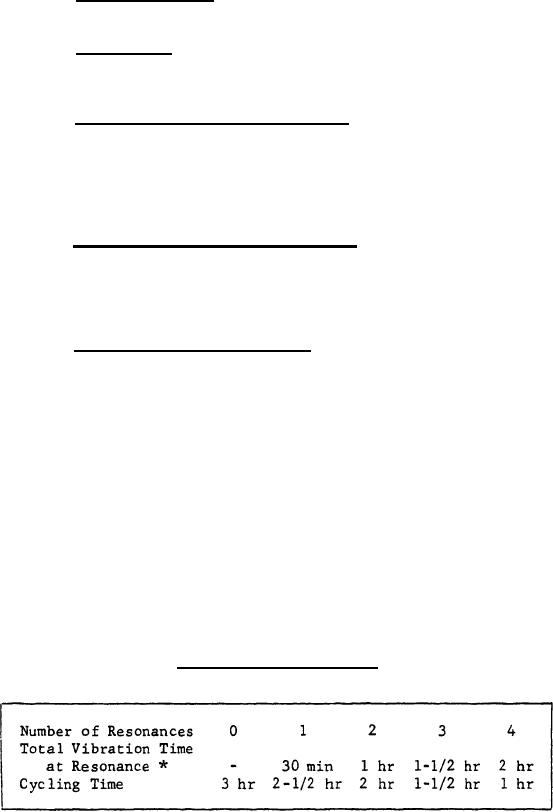 |
|||
|
|
|||
| ||||||||||
|
|  MIL-V-82443(0S)
4.4.4
Test procedures.
4.4.4.1
Inspection. The valve shall be subjected to the inspections,
prior to firing, detailed in 4.5.6.1 through 4.5.6.4.
4.4.4.2
Auto-ignition, low temperature. The valve (or sample squib)
shall be heated in air to a temperature of +170 F 2 F and maintained
at that temperature for 2 hours. The valve (or sample squib) shall not
fire. Thereafter, the valve (or sample squib) shall be capable of meeting
the requirements of 4.4.4.13.
4.4.4.3
Auto-ignition, high temperature. The valve shall be heated
in air to a
temperature of +200 F 10 F and maintained at that
temperature
for 8 hours. The valve shall not fire. Thereafter, the
valve shall
not be required to meet the operating characteristics.
4.4.4.4
Vibration, ready condition. The valve, in the ready condi-
tion, shall be mounted in a manner equivalent to that shown in Figure 1.
The resonant modes in each of the 3 axes shall be determined by varying
the frequency of applied vibration slowly from 5 cps to 500 cps. The
valve shall then be subjected to resonance and cycling vibration in each
axis, in conformance with the times shown in Table V. If more than 4
resonances are encountered on any axis, the 4 most severe resonances shall
be chosen for the test. The resonant and cycling period, for each axis,
shall be divided into 3 equal parts, which are conducted at -45 F 5 F,
room temperature and + 140 F 5 F respectively. For cycling, a
logarithmic frequency sweep rate shall be used if available; otherwise,
other cycling rates of frequency change may be used. The sweep rate shall
be such that 15 minutes actual vibration time is required to proceed from
the lower to higher and back to the lower extremity of frequency range in
accordance with the accelerations or double amplitudes defined in Table VI.
TABLE V
VIBRATION TEST SCHEDULE
* 30 minutes each resonance
11
|
|
Privacy Statement - Press Release - Copyright Information. - Contact Us |